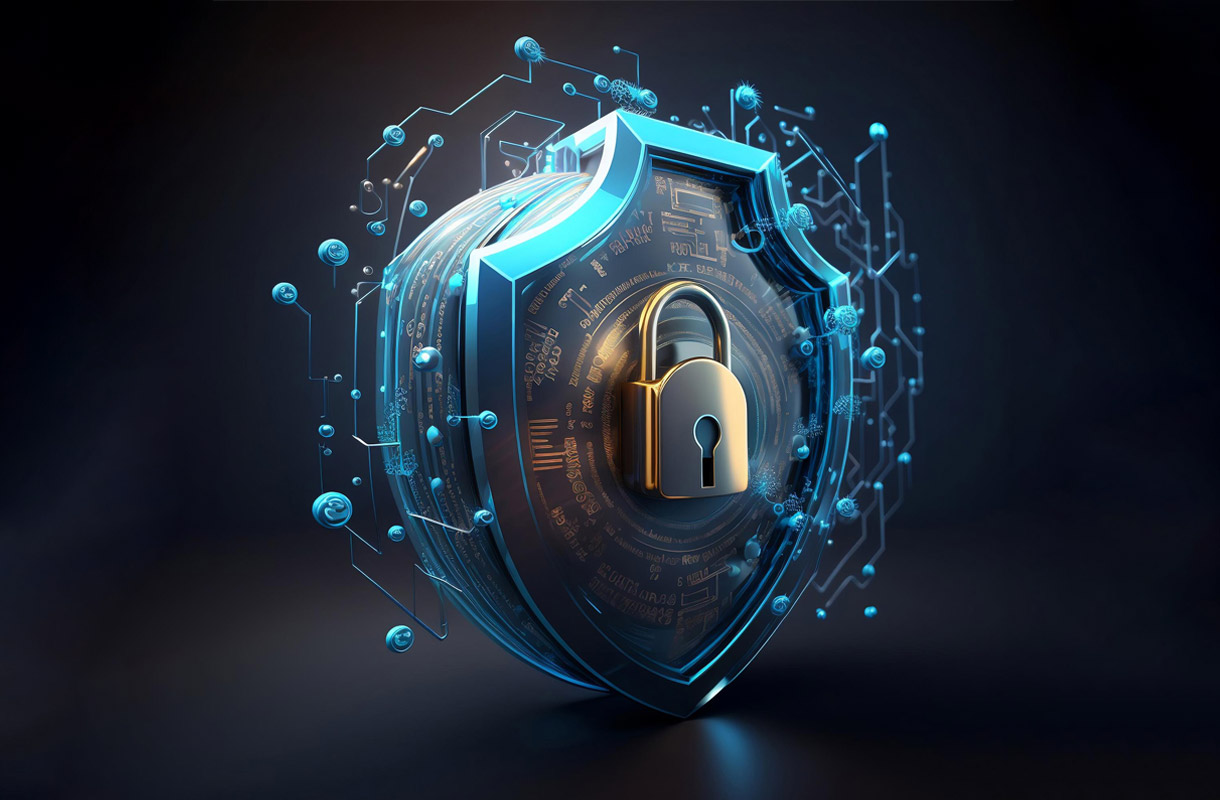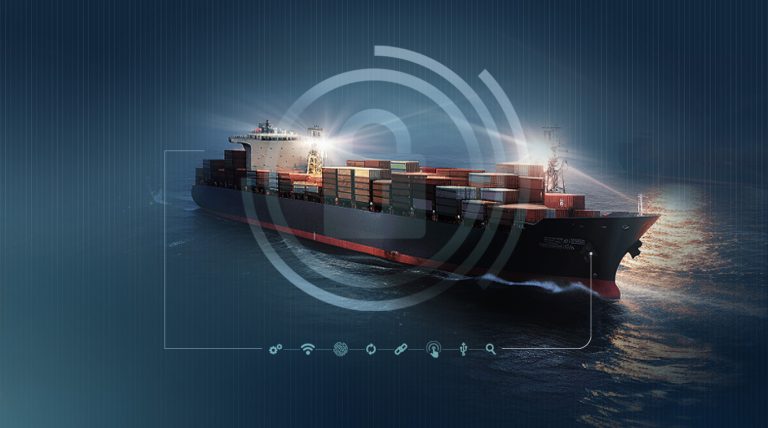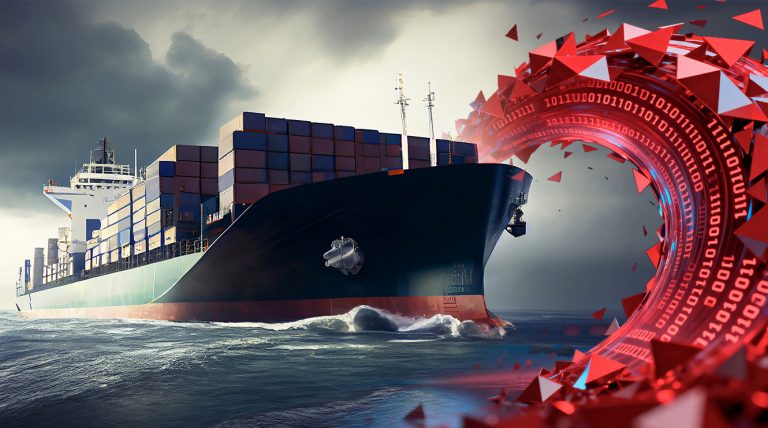In an era where maritime operations are heavily reliant on technology, ensuring the security of vessels against cyber threats has become a paramount concern. The rise in cyberattacks makes it crucial to adopt proactive measures to defend our digital space.
However, the defense extends beyond the vessels themselves. Maritime organizations must also address the protection of personal devices used by the crew. Here are ten essential actions tailored to maritime settings, enabling you to fortify your vessels and personal devices against potential cyberattacks:
1. Stay Updated: Keep Hackers Out with Regular Updates
Regularly updating your device’s operating system and software is your first line of defense against cyber threats. These updates often come with vital security patches that shield your device against known vulnerabilities. By staying up-to-date, you ensure that your device is equipped to fend off the latest hacking techniques.
2. Strong Passwords: Lock Out Unauthorized Access with Robust Codes
Crafting strong and distinct passwords for each maritime system is fundamental. Combine alphanumeric characters and symbols to create a potent password that hackers cannot easily decipher. Remember, the more intricate your password, the greater the challenge for malicious entities seeking unauthorized entry.
3. Two-Factor Authentication (2FA): Double the Security Layers
Integrate Two-Factor Authentication (2FA) wherever possible to provide an additional level of defense beyond passwords. This process demands a secondary form of validation, like a code sent to authorized personnel, in addition to passwords. This extra measure significantly heightens the difficulty for hackers attempting to breach maritime systems.
4. Beware of Phishing: Navigate Away from Deceptive Tactics
Exercise vigilance when handling unsolicited emails or messages in maritime contexts. Hackers frequently employ phishing techniques to manipulate crew members into disclosing sensitive information or engaging with malicious links. Always verify the legitimacy of senders, steer clear of suspicious links, and avoid sharing confidential details.
5. Secure Network Connections: Anchor Your Data Protection
Preserve your maritime data integrity by employing encrypted Wi-Fi networks and steering clear of public, unsecured options. Public networks can serve as breeding grounds for cyber intrusions. Guarantee the security of your vessel’s network by implementing robust passwords and enabling encryption protocols.
6. Firewall Protection: Erect a Digital Perimeter
Activate the vessel’s firewall to supervise inbound and outbound network traffic. This cyber barrier functions as a safeguard against unauthorized access, impeding the entry of potentially harmful data. This fortified layer fortifies your maritime digital defenses.
7. App Permissions: Grant Access Wisely to Safeguard Data
Evaluate and curtail app permissions to only the essentials. Certain apps may request unnecessary access to sensitive data, potentially exposing vulnerabilities. Through vigilant app permission management, you regain control and minimize the risk of breaches.
8. Secure Data Backup: Prepare for the Worst, Hope for the Best
Regularly back up your data to secure cloud services or external devices. In the event that your device is compromised, having a recent backup ensures you can recover your valuable information. This practice offers a safety net against potential data loss due to cyberattacks.
9. Install Antivirus Software: Guard Against Intruders
Employ reputable antivirus and anti-malware software to scan for and remove potential threats. These tools can detect and eliminate malicious software that could otherwise compromise your device’s security. Keep your antivirus software up-to-date for optimal protection.
10. Stay Educated: Empower Your Maritime Crew with Knowledge
Stay well-informed about evolving hacking tactics and trends within the maritime industry. Awareness of potential threats, combined with up-to-date cybersecurity practices, empowers crew members to make informed decisions and take proactive steps to secure maritime operations and their personal devices.
Your Maritime Digital Stronghold: Vigilance and Victory
While these measures may appear basic, they serve as the cornerstone of your maritime digital stronghold. Remember that even the simplest precautions can thwart the most sophisticated hacking endeavors. By implementing these immediate actions, you seize control of maritime cybersecurity, safeguarding vessels and personal devices from the dynamic landscape of cyber threats. Your maritime digital stronghold remains steadfast when constructed upon these critical foundations. Maintain watchfulness, uphold security, and navigate with confidence in the digital maritime era.
Navigating Maritime Cybersecurity with MarPoint
MarPoint, an ABS Class approved Service Supplier, stands at the forefront of this battle against cyber threats. Our commitment to excellence is exemplified by our certification under ISO 27001:2013 for the Information Security Management System (ISMS), demonstrating MarPoint’s unwavering dedication to ensuring the confidentiality and integrity of processed information.
Moreover, MarPoint serves as an invaluable partner in helping maritime organizations meet the challenges posed by the IMO 2021 regulation on cybersecurity. This regulation marks a pivotal step in enhancing the industry’s cyber resilience, and MarPoint’s expertise and solutions are tailored to align seamlessly with these requirements.
With our trusted capabilities, MarPoint provides cutting-edge solutions that bolster cybersecurity defenses, helping maritime organizations navigate the complexities of the digital age with confidence and resilience.
As you set sail on the waters of tomorrow, let MarPoint be your trusted partner in safeguarding your vessels and digital landscapes from the ever-evolving challenges posed by cyber threats, while ensuring compliance with industry regulations.





